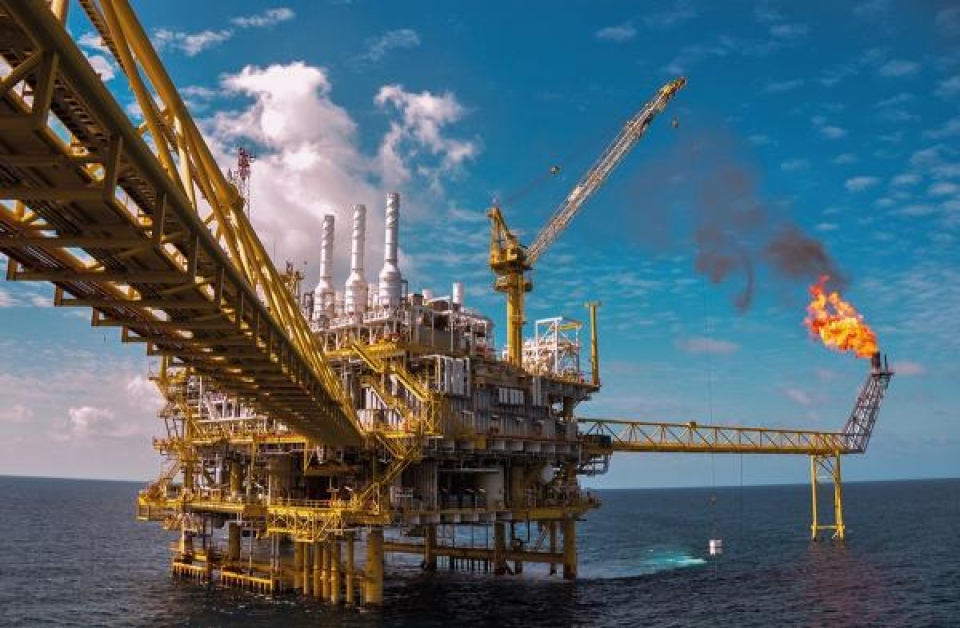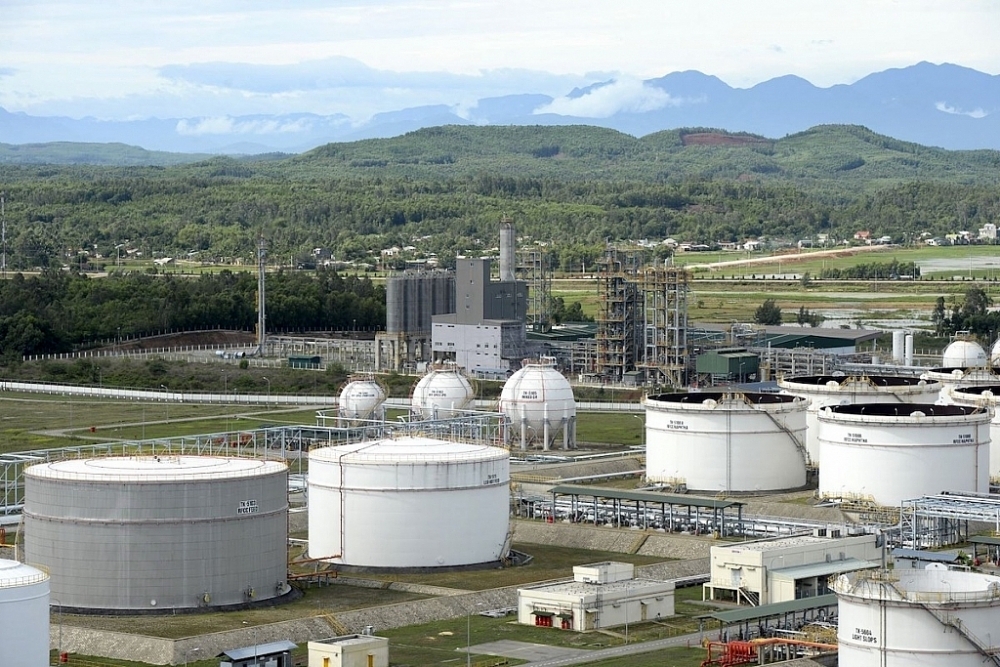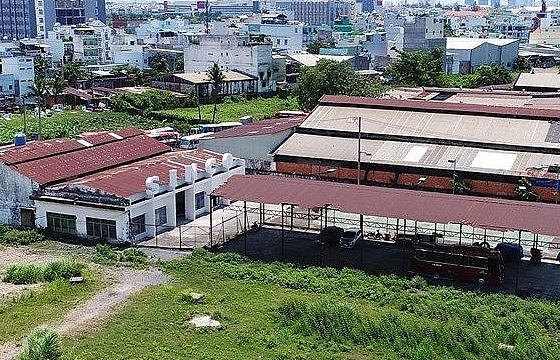Shares fluctuating as oil prices
 |
| The biggest problem with oil price movements is still the imbalance between supply and demand. Source: Internet. |
After the news that US crude stocks rose sharply, world oil prices have dropped to the lowest level since early 2017 in the March 8th session. In particular, WTI and Brent oil prices closed on March 8th, falling 5% and 4.4% respectively to $US 50.13 a barrel and $US 53.1 a barrel. Earlier, data from the EIA showed the US oil inventories in the week ending March 3rd rose 8.2 million barrels, ahead of analyst expectations of 2 million barrels and the 9th increasing week consecutively. Most of the increase (about 4.6 million barrels) came from the sudden change of oil storage in the West Coast of the United States. The move pushed the country's reserves to a record 528.4 million barrels (excluding the national strategic oil stockpile). Previously, petroleum stocks closed in red in March 9th, particularly GAS fell 1.7%, PVD fell 2.3%, PVS fell 1.7%.
In the next session, oil prices recovered slightly due to positive news related to the OPEC production cut, but on the electronic board, many stocks of petroleum companies are still in red. According to analyst Tran Duc Anh - BVSC Securities, oil prices will hardly be able to fall deeper (below the support level of $US 50/barrel with WTO oil) due to OPEC's production cuts still showing some success. However, in case the support threshold of $US 50 per barrel is broken, it is likely that oil prices will fall to a deeper level at $US 47-48 per barrel.
From early 2017 until now, oil prices have continuously ups and downs before the information related to supply in the world market. Specifically, a historic deal on cutting OPEC oil production by up to 1.2 million barrels a day from January 1, 2017 has been seen as a positive sign for oil prices in 2017. In addition, non-OPEC countries including Russia also plan to cut 558,000 barrels per day. According to the International Energy Agency (IEA), if all parties fulfill their commitment to cut output, the market could fall into oil shortages in the first half of 2017, with an estimated shortfall of approximately 600,000 barrels per day or at least return to the supply and demand balance. On the basis of this agreement, many domestic organizations are predicting that oil prices in 2017 will remain steady at $US 60 a barrel, while foreigners are forecasting oil prices at $US 56 a barrel.
However, soon after, news of an increase in US production has had a negative impact on oil prices. This information mixed with information on the level of implementation of commitments under the OPEC agreement in many countries that led the oil prices to be constantly fluctuating. Along with the fluctuation of oil prices in the world market, the price of petroleum stocks has also continuously increased. Specifically, the closing of trading on March 10, GAS shares closed at 55,800 vnd per unit, well below the 60,600 vnd per share for the last session of 2016. It has reached the price of up to 63,000 vnd per unit in the session on 23 of February. PVD has also reached its peak since the beginning of 2017 in the 22nd session with the price of 23,300 vnd. PVD's current price is 21,150 vnd/unit, slightly higher than 20,700 vnd at the end of 2016. Similarly, after many sessions, PXS shares are currently priced at 10,300 vnd/unit while by the end of 2016 was 9,570 vnd / unit; PVT is currently priced at 12,700 vnd, higher than the price of 11,600 vnd at the end of 2016.
Effect of the division
Analysts at Maritime Securities said that the oil market remains volatile and is affected by the possibility of a stronger dollar if the US Federal Reserve (FED) continues to adjust interest rates in the coming time. The rising dollar makes oil more expensive for investors who are holding other currencies. In addition, the rise in oil prices means that investment will be poured into this sector again. Specifically, the number of oil rigs has rebounded in recent months and signs of a recovery in the sector have been curtailed over the past few days, as oil prices plummeted. According to the IEA, OPEC member countries want to reduce production to push up oil prices, but only to a certain extent. If oil prices rise above $US 55 a barrel, the shale oil producers in the United States could turn to mining.
Meanwhile, BSC Securities Company also said that the biggest problem with the world oil price is still the imbalance of supply and demand. Supply is expected to rise sharply in the event of a recovery in oil prices, as shale oil production costs in the United States fall sharply, along with a rise in the number of existing rigs. However, the positive point is that the stock market will have some big names in the oil and gas industry. In particular, Petrolimex has submitted the registration documents listed on HOSE and is expected to officially list in the middle of April 2017. In addition, Binh Son Petrochemical Company (BSR) is also scheduled to be equitized in 2017, promising to attract investors. Big names on the stock exchange will help attract foreign investors' attention and increase information transparency in the industry.
BSC’s experts also noted that the recovery of oil prices will not be reflected directly in business results of construction companies in the first half of 2017, especially when exploration and production plans for 2017 has been approved by the Government, and not many new projects are approved. Conversely, the second half of 2017 is expected to have more positive developments in the oil and gas industry, along with the expectation of increasing production. For gas companies, the increase in oil prices is expected to lead to more positive developments in LPG and CNG prices, which will help boost sales of gas businesses, although profit margins will continue to be stable. BSC notes that major projects will contribute significantly to the construction companies' operations from 2018, and may help improve the prices of construction stocks such as PXS and PVS in the second half of 2017.
Related News

Oil prices surges due to political conflict to put pressure on inflation
15:15 | 08/11/2023 Headlines

The opposite impact from oil prices
09:43 | 10/03/2021 Import-Export
Latest News

Fed’s foreseen rate cuts affect foreign exchange rate
14:12 | 23/12/2024 Finance

Untying the knot for green finance
11:08 | 23/12/2024 Finance

Ensuring efficiency and transparency in use and management of houses and land at State enterprises
13:54 | 22/12/2024 Finance

Vietnam's stock market to develop strongly and sustainably
19:08 | 21/12/2024 Finance
More News

Tax sector achieves revenue target of about VND1.7 million billion
18:32 | 21/12/2024 Finance

General inventory of public assets raises efficiency of use and management of country's resources
09:29 | 20/12/2024 Finance

Publicizes progress of public investment disbursement for important national projects
15:21 | 19/12/2024 Finance

Six SOEs to be transferred back to industry ministry
15:38 | 18/12/2024 Finance

PM urges stronger measures to manage interest rates
16:53 | 17/12/2024 Finance

Six SOEs to be transferred back to industry ministry
16:48 | 17/12/2024 Finance

Vietnamese products: Conquering foreign customers in supermarket systems
16:45 | 17/12/2024 Finance

Answering many questions from businesses at dialogue conference on tax and customs policies
10:01 | 17/12/2024 Finance

Enterprises face difficulties in tax refunds due to partners closing
10:01 | 17/12/2024 Finance
Your care

Fed’s foreseen rate cuts affect foreign exchange rate
14:12 | 23/12/2024 Finance

Untying the knot for green finance
11:08 | 23/12/2024 Finance

Ensuring efficiency and transparency in use and management of houses and land at State enterprises
13:54 | 22/12/2024 Finance

Vietnam's stock market to develop strongly and sustainably
19:08 | 21/12/2024 Finance

Tax sector achieves revenue target of about VND1.7 million billion
18:32 | 21/12/2024 Finance



